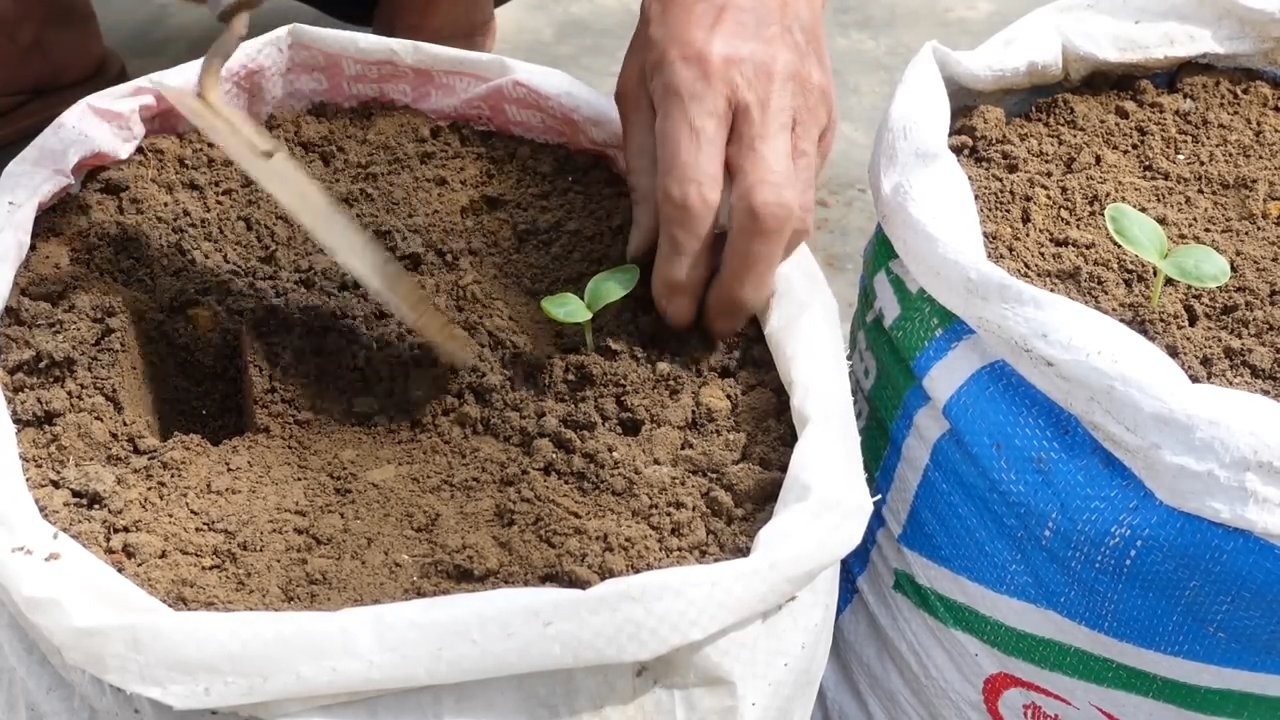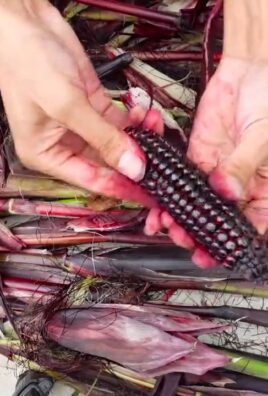Homegrown Long Squash Recipes: Unlock a world of culinary possibilities right in your backyard! Have you ever dreamt of transforming a humble vegetable patch into a source of delicious and unique meals? I know I have! This article is your passport to doing just that, focusing on the incredible versatility of homegrown long squash.
For centuries, squash has been a staple in diets across the globe, holding a special place in many cultures. From the indigenous peoples of the Americas, who revered squash as one of the “Three Sisters” (along with corn and beans), to its adoption into European and Asian cuisines, this vegetable boasts a rich and fascinating history. But let’s be honest, sometimes we get stuck in a rut, preparing the same old squash dishes time and again.
That’s where this DIY guide comes in! I’m here to share some exciting and innovative homegrown long squash recipes that will breathe new life into your cooking. Whether you’re a seasoned gardener with a bountiful harvest or a beginner just starting out, these recipes are designed to be accessible and inspiring. Why settle for bland and boring when you can create culinary masterpieces with the fruits (or rather, vegetables!) of your labor? Get ready to discover the amazing potential of your homegrown long squash and impress your family and friends with dishes they’ve never tasted before!

Using Long Squashes from Your Own Garden: A DIY Guide for Delicious Recipes
Hello, dear garden friends and home cooks! Did you also have a bountiful harvest of long squashes this year? Then you’ve come to the right place! I’ll show you how to turn these versatile vegetables into delicious dishes. Don’t worry, it’s easier than you think!
What you should know about long squashes
Before we get started, a few important pieces of information: Long squashes, such as the Tromboncino or snake gourd, are not only a visual highlight but also very valuable culinary. They have a mild, slightly nutty flavor and a delicate texture, especially when harvested young. Older specimens can be a bit firmer but are still excellent for soups and stews.
Important tips beforehand:
- Harvesting time: Young squashes have a thinner skin and more tender flesh. Older squashes may have a tougher skin that may need to be peeled.
- Storage: Long squashes will keep in the refrigerator for a few days. For longer storage, they can be frozen or pickled.
- Preparation: Before preparation, you should wash the squash thoroughly and peel or deseed it depending on the recipe.
Recipe 1: Roasted Squash Wedges with Herbs and Garlic
This recipe is super easy and quick to prepare and is perfect as a side dish or a light meal.
Required ingredients:
- 1 long squash (approx. 500g)
- 2-3 cloves of garlic
- Fresh herbs (e.g., rosemary, thyme, sage)
- Olive oil
- Salt and pepper
Step-by-step instructions:
- Prepare the squash: Wash the squash thoroughly and cut it into wedges about 1 cm thick. If the squash is very large, you can halve it beforehand and remove the seeds.
- Prepare the garlic and herbs: Peel the garlic and chop it finely. Also, chop the fresh herbs.
- Prepare the marinade: In a bowl, mix the olive oil, garlic, herbs, salt, and pepper.
- Marinate the squash: Add the squash wedges to the bowl and mix everything well so that the wedges are evenly coated with the marinade.
- Roasting: Preheat the oven to 200°C (top/bottom heat). Place the squash wedges on a baking sheet and bake for about 20-25 minutes, until they are soft and lightly browned.
- Serving: Serve the roasted squash wedges warm as a side dish or with a dip as a light meal.
Recipe 2: Creamy Squash Soup with Ginger and Coconut Milk
This soup is a real soul soother and warms you from the inside. The ginger and coconut milk give it an exotic touch.
Required ingredients:
- 1 long squash (approx. 800g)
- 1 onion
- 1 piece of ginger (approx. 2 cm)
- 1 can of coconut milk (400ml)
- Vegetable broth
- Olive oil
- Salt and pepper
- Optional: Chili
Step-by-step instructions:
- Prepare the squash: Peel the squash, remove the seeds, and cut it into cubes.
- Prepare the onion and ginger: Peel the onion and ginger and chop them finely.
- Sauté: Heat some olive oil in a pot and sauté the onion and ginger until they are translucent.
- Add the squash: Add the squash cubes to the pot and sauté them briefly.
- Deglaze with broth: Pour enough vegetable broth into the pot to cover the squash.
- Simmer: Let the soup simmer for about 20-25 minutes, until the squash is soft.
- Purée: Purée the soup with an immersion blender until it is creamy.
- Add the coconut milk: Add the coconut milk to the soup and bring it to a brief boil.
- Season: Season the soup with salt, pepper, and possibly chili.
- Serving: Serve the squash soup hot and garnish it as desired with fresh herbs or a dollop of coconut milk.
Recipe 3: Squash Frittata with Feta and Spinach
A frittata is an Italian version of the omelet and is excellent for using up vegetables. This squash frittata is particularly delicious and filling.
Required ingredients:
- 1 long squash (approx. 300g)
- 1 onion
- 100g spinach
- 100g feta
- 6 eggs
- Milk or cream
- Olive oil
- Salt and pepper
- Optional: Nutmeg
Step-by-step instructions:
- Prepare the squash: Peel the squash, remove the seeds, and cut it into small cubes.
- Prepare the onion: Peel the onion and chop it finely.
- Sauté: Heat some olive oil in a pan and sauté the onion until it is translucent.
- Add the squash: Add the squash cubes to the pan and sauté them briefly.
- Add the spinach: Add the spinach to the pan and let it wilt.
- Whisk the eggs: In a bowl, whisk the eggs with a little milk or cream, salt, pepper, and optional nutmeg.
- Crumble the feta: Crumble the feta and add it to the egg mixture.
- Add the vegetable mixture: Add the vegetable mixture to the egg mixture and mix everything well.
- Bake the frittata: Pour the egg mixture into the pan and let it set over low heat. You can either finish baking the frittata on the stove or put it in the preheated oven (180°C) for about 10-15 minutes.
- Serving: Serve the squash frittata warm or cold.
Recipe 4: Pickled Squash (Pickles)
If you want to make your squash last longer, pickling is a great option. These squash pickles are a delicious accompaniment to cheese, bread, or grilled food.
Required ingredients:
- 1 long squash (approx. 500g)
- 250ml vinegar (e.g., apple cider vinegar or white wine vinegar)
- 125ml water
- 100g sugar
- 1 tsp mustard seeds
- 1 tsp coriander seeds
- 1/2 tsp turmeric
- 1 bay leaf
- Salt and pepper
Step-by-step instructions:
Prepare the brine: In a pot, bring the vinegar, water, sugar, mustard seeds, coriander seeds, turmeric, bay leaf, salt, and pepper to a boil.
Prepare the squash: Peel the squash, remove the seeds, and cut it into small cubes or strips.

Conclusion
So, there you have it! Transforming your abundance of homegrown long squash into culinary masterpieces is not only achievable, but incredibly rewarding. We’ve explored a range of delicious and versatile options, from savory gratins and hearty soups to sweet breads and even creative fritters. But the real magic lies in the *process* – the satisfaction of using something you nurtured from seed to table, the joy of experimenting with flavors, and the pride in creating something truly unique.
This isn’t just about using up your harvest; it’s about embracing the seasonality of your garden and connecting with your food on a deeper level. It’s about reducing food waste and appreciating the bounty that nature provides. And it’s about discovering new favorite recipes that you can adapt and personalize year after year.
Why is this a must-try? Because it’s a win-win! You get to enjoy delicious, healthy meals, reduce food waste, and tap into your creativity in the kitchen. Plus, you’ll be amazed at the versatility of long squash. It’s a blank canvas for flavor, ready to absorb whatever spices, herbs, and other ingredients you throw its way.
Variations and Suggestions
Don’t be afraid to experiment! If you’re not a fan of nutmeg, try cinnamon or cardamom in your long squash bread. If you prefer a spicier soup, add a pinch of cayenne pepper or a dash of hot sauce. For the gratin, consider using different types of cheese, such as Gruyere or Fontina, for a richer flavor. And for the fritters, try adding some chopped herbs like parsley or chives for a fresh, vibrant twist.
Consider roasting the long squash before adding it to soups or gratins for a deeper, more caramelized flavor. You can also puree cooked long squash and freeze it in portions for later use in smoothies, sauces, or baby food. Get creative with your seasonings! Long squash pairs well with a wide range of spices, including ginger, cumin, coriander, and turmeric.
For a vegan option, substitute plant-based milk and butter in the bread and gratin recipes. You can also use nutritional yeast to add a cheesy flavor to the gratin. In the fritters, use a flax egg (1 tablespoon of ground flaxseed mixed with 3 tablespoons of water) as a binder.
Ultimately, the best way to discover your favorite long squash recipes is to get in the kitchen and start experimenting. Don’t be afraid to make mistakes – that’s how you learn! And most importantly, have fun!
We encourage you to try these recipes and share your experiences with us. Did you make any modifications? What were your favorite flavor combinations? What other creative ways have you found to use your homegrown long squash? Share your photos and stories on social media using [Your Hashtag Here] – we can’t wait to see what you create!
Embrace the challenge, savor the flavors, and enjoy the journey of transforming your homegrown long squash into culinary delights. You’ll be amazed at what you can create! Mastering these **homegrown long squash recipes** will not only impress your family and friends but also connect you more deeply with the food you eat. Happy cooking!
FAQ
Here are some frequently asked questions about using homegrown long squash in recipes:
Q: What exactly *is* long squash, and how is it different from other types of squash?
A: “Long squash” is a general term that can refer to several varieties of squash characterized by their elongated shape. This often includes varieties like Tromboncino squash (also known as Zucchetta), some types of butternut squash that grow particularly long, and even certain types of zucchini if they are allowed to mature and grow larger. The key difference lies in the shape and sometimes the texture. Compared to rounder squashes like pumpkins or acorn squash, long squashes have a more cylindrical form. The texture can vary depending on the variety and maturity, but generally, they have a firm flesh that holds its shape well when cooked.
Q: How do I know when my long squash is ripe and ready to harvest?
A: The ripeness of long squash depends on the specific variety. However, there are some general guidelines. Look for a deep, even color (usually a shade of green, yellow, or tan depending on the variety). The skin should be firm and resistant to scratching. If you can easily pierce the skin with your fingernail, it’s likely not ripe yet. The stem should also be dry and hardened. For Tromboncino squash, the bulbous end will be firm and the skin will be a consistent color.
Q: Can I eat the skin of long squash?
A: It depends on the variety and maturity of the squash. For younger, thinner-skinned varieties like Tromboncino, the skin is often edible and can be left on during cooking. However, for older, thicker-skinned squashes, it’s best to peel them before using. If you’re unsure, it’s always a good idea to peel the squash to ensure a more pleasant texture.
Q: How should I store long squash after harvesting?
A: Proper storage is crucial for extending the shelf life of your long squash. First, make sure the squash is completely dry. Then, store it in a cool, dry, and well-ventilated place, such as a basement or pantry. Avoid storing it in direct sunlight or near heat sources. Ideally, the temperature should be between 50-60°F (10-15°C). Handle the squash carefully to avoid bruising, as this can lead to spoilage. Properly stored, long squash can last for several months.
Q: Can I freeze long squash?
A: Yes, you can freeze long squash, but it’s best to cook it first. Raw squash tends to become mushy when thawed. To freeze, peel and seed the squash, then cut it into cubes or slices. Cook it by steaming, boiling, or roasting until tender. Let it cool completely, then pack it into freezer bags or containers, removing as much air as possible. Frozen cooked squash can last for up to 8-12 months.
Q: What are some good flavor pairings for long squash?
A: Long squash is incredibly versatile and pairs well with a wide range of flavors. Some popular pairings include:
* **Herbs:** Sage, thyme, rosemary, parsley, chives
* **Spices:** Nutmeg, cinnamon, ginger, cumin, coriander, turmeric, cayenne pepper
* **Vegetables:** Onions, garlic, carrots, celery, tomatoes, spinach
* **Cheeses:** Parmesan, Gruyere, Fontina, cheddar
* **Nuts:** Walnuts, pecans, almonds
* **Fruits:** Apples, pears
* **Proteins:** Chicken, sausage, beans
Q: My long squash is very large. Do I need to use it all at once?
A: No, you don’t need to use it all at once. You can cut the squash into smaller portions and store the unused portion in the refrigerator. Wrap the cut end tightly in plastic wrap to prevent it from drying out. It should last for several days in the refrigerator. Alternatively, you can cook the entire squash and freeze the leftovers for later use.
Q: Can I use long squash in place of other types of squash in recipes?
A: In many cases, yes! Long squash can often be substituted for other types of squash, such as butternut squash or zucchini, in recipes. However, keep in mind that the texture and flavor may vary slightly, so you may need to adjust the cooking time or seasonings accordingly.
Q: I’m having trouble finding long squash at my local grocery store. Where else can I find it?
A: Long squash may not be readily available at all grocery stores, especially outside of its peak season. Try checking your local farmers’ markets, specialty produce stores, or community gardens. You can also grow your own long squash! Seeds are readily available online and at garden centers.
Q: What are the nutritional benefits of eating long squash?
A: Long squash is a nutritious vegetable that is low in calories and high in vitamins, minerals, and fiber. It’s a good source of vitamin A, vitamin C, potassium, and antioxidants. Fiber helps to promote digestive health and can help to lower cholesterol levels.





Leave a Comment